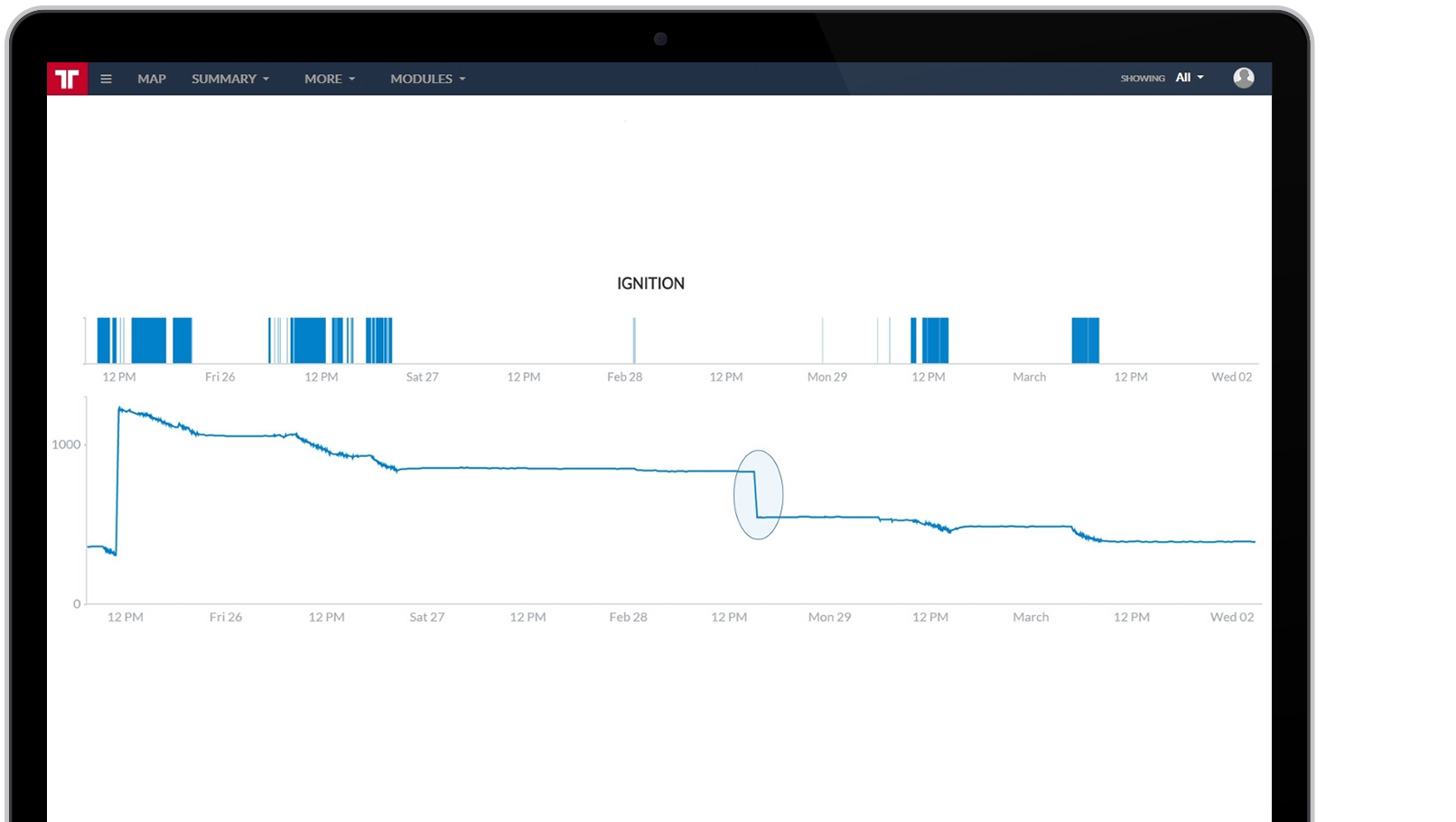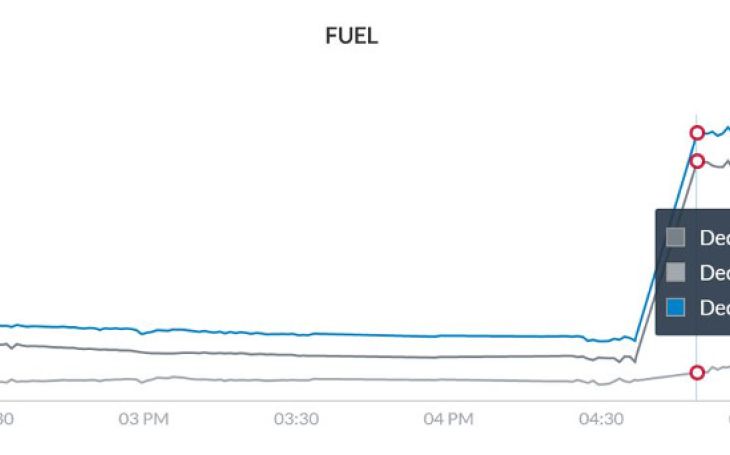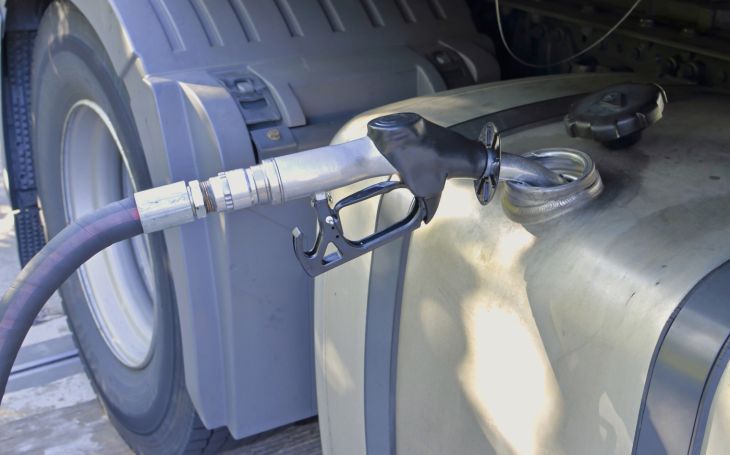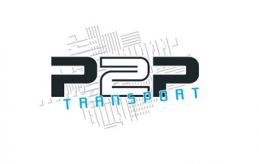You can't explain why fuel consumption fluctuates across your fleet. Without accurate monitoring, it's impossible to know whether the cause is driving behavior, vehicle inefficiency, or even theft. You need to get to the bottom of things, discover what is happening across your fleet, and uncover opportunities to save on fuel and optimize operations.
Fuel theft, wastage, and unauthorized use are persistent problems in many regions.
The Fuel management module provides you with the tools to ensure that all consumptions, refills, and drains are tracked and accounted for.
Working side by side with the Fleet cost management module, it ensures that every unit of fuel consumed is accounted for, allowing you to:
- Detect and prevent fuel theft and unauthorized usage.
- Identify and reduce fuel wastage.
- Measure CO₂ emissions of your combustion-engine fleet and monitor reductions as you integrate EVs and natural gas vehicles.
- Compare actual consumption with receipts or imported fuel cost files for greater accuracy.
This integrated approach helps you confidently manage one of your fleet's main expenses as you pave the way for a more sustainable future.
Frotcom integrates fuel sensors, fuel monitoring tools, and GPS tracking to provide a comprehensive fuel management solution. It utilizes fuel level sensors installed in each truck's tank to monitor fuel consumption effectively.
Frotcom supports various fuel sensor types that differ in size and measurement accuracy. While it can also work with factory-fit fuel sensors, these are generally not precise enough to detect small fluctuations of 2-5%.
With the Fuel management, you can retrieve:
- Fuel level in the tank – measured as a percentage and converted into liters or gallons, based on each vehicle’s tank capacity.
- Fuel refills and drainages – automatic detection of sudden increases (refueling) or decreases (possible fuel theft or loss).
- Fuel consumption – calculated via CANBus data (Total Fuel Used) or fuel sensor readings, depending on your vehicle setup.
- Average fuel consumption – tracked by distance or by period.
- CO₂ emissions tracking – monitor and report fleet emissions, comparing combustion vehicles.
To help you act quickly and accurately, Frotcom provides:
- Alarms – instant alerts for sudden changes in fuel level.
- Graphs and reports – detailed visualizations to verify refueling and detect anomalies.
- Driving behavior monitoring – insights on how idling, speeding, or aggressive driving impact fuel or energy costs.
- Dashboard KPIs – track efficiency and progress toward cost-reduction and sustainability goals, as well as your fuel-related costs, and compare them with your drivers' driving behavior.
Additionally, the Fleet cost management module, allows you to compare recorded refueling or recharging volumes with the values reported in cost notes (receipts, fuel files, energy invoices, etc.).
For added security, you can install a fuel filler security accessory in each tank, preventing fuel theft by syphoning while still allowing for tank refilling.
Benefits
Track fuel levels and consumption permanently. Gain detailed insights into every refuelling or draining operation.
Monitor fuel consumption patterns to quickly identify anomalies such as unexpected drops, abnormal charging or refueling volumes, or possible leaks. This lets you act promptly and prevent fuel theft, fraud, and operational inefficiencies.
Receive alerts whenever a vehicle is refueled at unauthorized stations, ensuring compliance with your company’s fuel policies and reducing unnecessary costs.
Devices and accessories

The sensor connected to one Frotcom device digital input triggers an event on Frotcom. Mounted on the tank lid neck, when closed, disables access to the fuel cap.

Digital sensor used to connect the devices with RS232 interface. It can be used in tanks of vehicles, tractors and other machinery with nominal on-board network voltage 12 or 24V.

Digital fuel level sensor, installed inside fuel tank for fuel volume measurement. It is used for detecting volumes of tank fill-up and alerting on fuel theft from tank.

Digital fuel sensor to connect the devices through the RS232 serial port. It can be used to measure liquid fuel and non-conductive liquids in vehicle tanks and storage.

Wireless fuel sensor can be used to measure the current fuel volume and its changes in a fuel tank. Wireless data transfer is carried out using S7 Technology via BLE channel.





